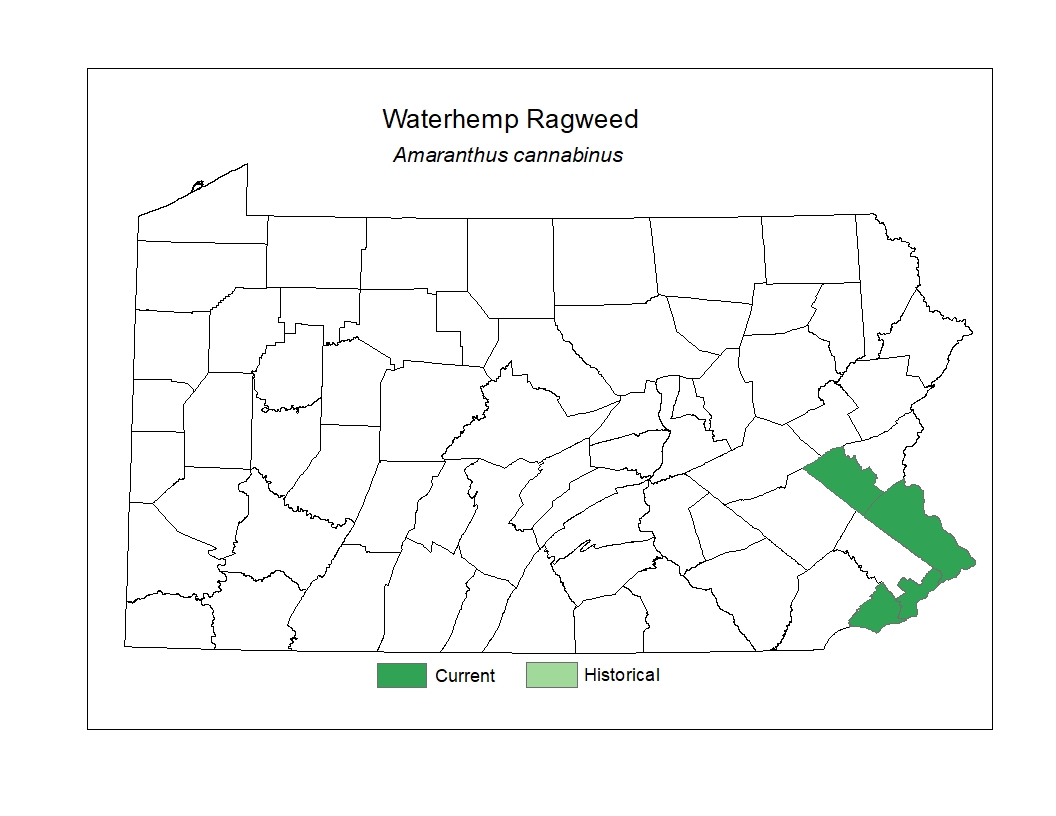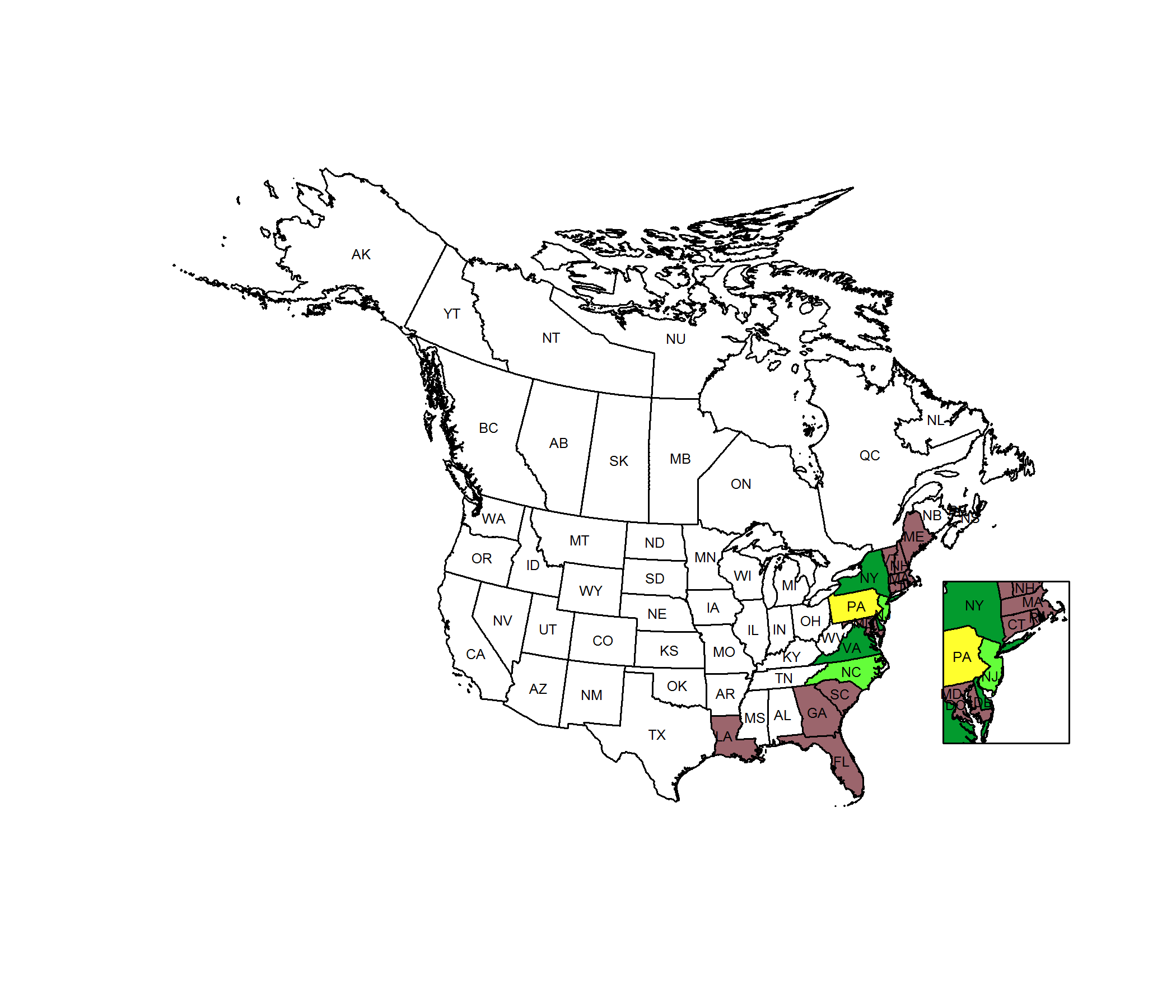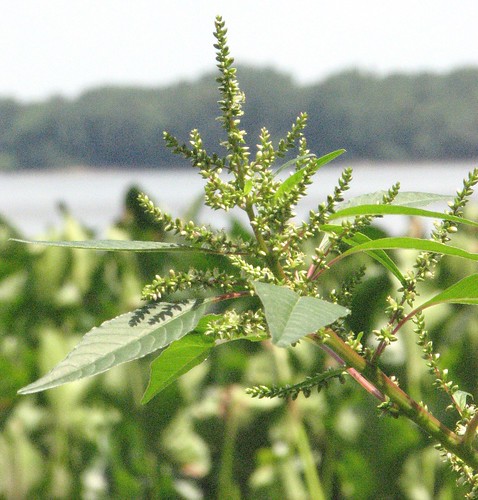 Species Factsheets
Species Factsheets
Amaranthus cannabinus
Water-hemp Ragweed
State Status: Pennsylvania Rare (PR)
PBS Status: Pennsylvania Rare (PR)
Federal Status:
Global Rank: G5
![]() rank interpretation
rank interpretation
State Rank: S3
Description
Water-hemp ragweed (Amaranthus cannabinus) is a perennial herb with a hairless stem that may grow up to 2.5m in height. The leaves are alternately arranged, lance-shaped, not toothed on the margin, up to 15cm in length and 4cm in width, with a well developed stalk at the base and pointed at the tip. The flowers, appearing from July to September, lack petals, are greenish in color, and are arranged in elongate spikes at the top of the stem. The male and female flowers occur on separate plants. The individual fruit is sac-like, about 4mm in length, and contains a single seed.
Rank Justification
Vulnerable in the nation or state due to a restricted range, relatively few populations (often 80 or fewer), recent and widespread declines, or other factors making it vulnerable to extirpation.
PABS
The PA Biological Survey (PABS) has assigned water-hemp ragweed a rarity status of Rare.
Habitat
Water-hemp ragweed grows in intertidal marshes, mudflats, and river shores, where it is subjected to daily fluctuations in water levels.
Survey Dates
Flowers mid-April - mid-May; fruits June - early July
Distribution
In Pennsylvania, ithas been documented in a few southeastern counties along the Delaware River.

Threats
The species has a very limited state range and a specialized habitat, yet appears to be relatively successful in maintaining itself, and does not appear to be endangered or threatened with extirpation. The habitat of this species has threats from exotic species, dredging and filling, and water pollution.
Conservation Status Map


NatureServe. 2017. NatureServe Explorer: An online encyclopedia of life [web application]. Version 7.1. NatureServe, Arlington, Virginia. Available https://explorer.natureserve.org.
- NatureServe. 2018. NatureServe Explorer: An online encyclopedia of life [web application]. Version 7.1. NatureServe, Arlington, Virginia. Available at https://www.natureserve.org/explorer
- Pennsylvania Natural Heritage Program. 2018.
- Rhoads, A.F. and W.M. Klein, Jr. 1993. The Vascular Flora of Pennsylvania. American Philosophical Society, Philadelphia, Pennsylvania. Rhoads, A.F. and T.A. Block.
- 2007. The Plants of Pennsylvania: An Illustrated Manual. 2nd edition. University of Pennsylvania Press, Philadelphia, Pennsylvania.







